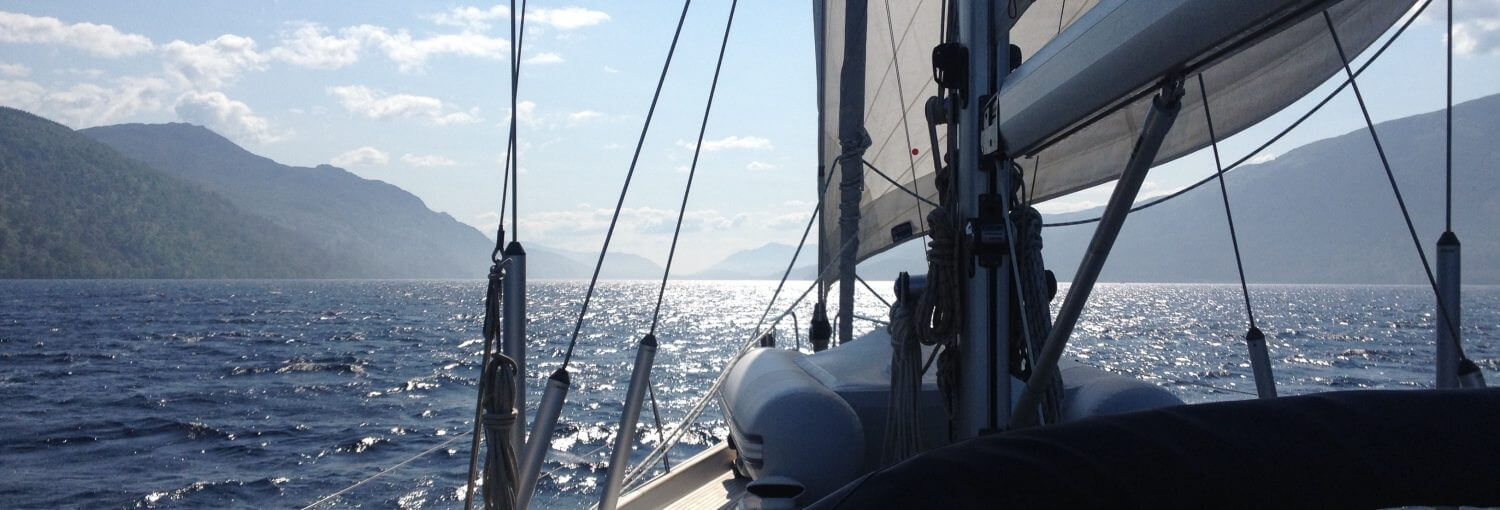At the 2025 Sailing North Day, we led a discussion table on "multiple night sailings. The following is what we told there.
Basic to be able to sail through several nights with a limited crew (2 people) is for us to have CONFIDENCE in each other through RULES and STRUCTURE.
CONFIDENCE is necessary to leave the sailing to the other when it is time to sleep. When sailing through 1 night, 'the head skipper' can stay awake most of the time and sleep briefly during the day. When sailing through several nights, it is important to both be able to be 'the skipper' and both get enough sleep.
The RULES we have that help us with multiple nights of sailing through are:
- Conservation sailing at night. Rather a little slower than chance having to sail on the edge at night and do tedious sail handling.
- The one on watch is on a leash and stays in the cockpit. We wake the other if it is necessary to leave the cockpit. All sailing operations can be done from our center cockpit.
- The one on watch may make all sail and course changes alone. When in doubt, we wake the other person. Sometimes we postpone sailing operations until the watch change in order to avoid waking the other person.
At the beginning of the night, we discuss the route to be sailed and what particulars there are along the way. The route is plotted in our navigation screen. - We always turn on the RADAR at night. Even in good visibility. Also, the AIS alarm and the RADAR alarm are on (at 2 nm distance). Except in crowded areas.
- Make sure you have good forward visibility. For example, we do not have a dinghy in front that can obstruct the view and also the lines at the mast are hung in such a way that they block as little view as possible.
The following give us good STRUCTURE when sailing through several nights.
- The night begins around 8 p.m. Then we clean up the boat for the night. The bimini comes off then, for example. All lines we put inside the cockpit. The sailing goes to conservative.
- Our waiting schedule is: Toine 20/21-00, Mira 00-03, Toine 03-06, Mira 06-09/10. We always keep strictly to that. That way the person sleeping also knows where they stand. In bad weather or difficult situations, we are awake together. Then we catch up on sleep during the day.
- In crowded areas, we are actively outside. We can also navigate completely from inside without having to go outside. We also do this when it is foggy (and nothing to see outside anyway) or cold and not too crowded areas. In quiet areas, whoever is on watch may take hazy naps of 15-18 min. Iphone is the alarm clock.
- A good and quiet sleeping place is important. We use the couch in the cabin and mattresses on the floor as close to the keel as possible (in the corridor to the aft cabin). We never sleep in the front of the tip or on the back of our bunk in a seaway. Mira always uses earplugs.
- The 1st night is no measure. Usually we are not caught up until the 2nd or 3rd night, especially with some sea swell. So during the day we keep quiet.
FURTHER IMPORTANT:
- Build experience step by step. We first did 1 night. The first time 2 nights was from Vlieland to Mandal in 2007. In 2008 we sailed 2 nights from South Brittany back to NL. Round Atlantic 2009-2010 from 3 (Gulf v B) to 4 (Madeira) to 6 (Gambia) and 14 (crossing).
- For first-time cruisers, choose several nights for a good weather window.
- We don't mind a night of motorcycling in calm weather if it takes us to a beautiful destination. We always put the engine on a quiet and economical setting.
- We recently got the tip of having headlamps with red light on when you are on watch. We have not tried this ourselves yet.
